Forest copper mine triggers controversy in Armenia
Forest copper mine triggers controversy in Armenia
Jeremy Hance, mongabay.com
January 28, 2008
|
|
In Northern Armenia, a company has been given the go-ahead to establish a copper mine in Teghut Forest sparking off a struggle between industry and environmentalists. Teghut Forest supports a large number of Armenia’s native species, including the Syrian Brown Bear and the Short-toed Eagle. The mine will be operated by Armenian Copper Program (ACP). ACP is apart of the Valex group, located in Liechtenstein and co-owned by Russian citizen, Valeri Medzhloumyan. The project will be the largest mine in Armenia, and is estimated to make a hundred million annually for as long as the mining lasts (most likely, less than twenty-five years). Environmentalists believe that the mine will cause large and lasting damage to the region, while government and industry state that the mine’s environmental impact will be small while giving the region an economic boost.
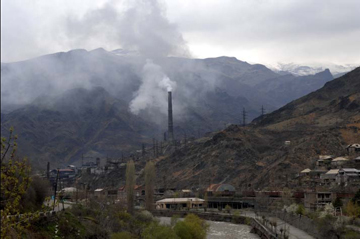 Alaverdi’s smelter and smokestack. Photo by Hrair “Hawk” Khatcherian |
The first environmental impact from the copper mine will be deforestation. The government has given ACP 1,570 hectares for the project and the company has stated that it will be necessary to clear cut 357 hectares for the mine. It will be an open pit mine, meaning that in place of these 357 hectares will eventually be a massive gaping hole. Gagik Arzumanyan, the executive director of ACP, said in an interview with Mongabay, “I personally do regret that this shall happen. I very much wish there would have been a way to avoid forest removal. Unfortunately, there is none.” At 357 hectares the deforestation would be the largest officially permitted by the Armenian government, yet environmentalists believe the actual number of hectares required for the mine will be far more. Anne Shirin, the English language coordinator for the Greens Union of Armenia, states that “typically, the mining company, ACP, claims that only a small part of the Teghut forest will be destroyed and the rest preserved, yet company projections for the amount of metal ore that will be mined in the coming 10 to 20 years proves just the opposite—most of the forest will be destroyed”. The executive director of the Armenia Tree Project, Jeff Masarjian, adds that some environmentalists “expect that up to 600 hectares will be deforested, including areas cut down for building roads onto the mountain. The numbers claimed by company officials and other stakeholders vary widely. It is to be expected that the company would understate the potential for environmental damage, while others might overestimate it, as the typical tension between best case and worst case scenarios.”
Deforestation is a large issue in Armenia; in fifteen years, from 1990-2005, Armenia lost 18.2% of its forest. This has been mostly due to illegal logging for fuel or construction materials, although industry has also played a role. To many the situation is dire, a recent UN study reported that 82% of Armenia is at risk of desertification due to the loss of green areas. The Armenian Tree Projects predicts that at current levels of deforestation, the entirety of Armenia will become a desert in 50 years. A letter from ACP responding to NGOs criticisms, including Armenia Tree Project, states that these NGOs should spend their time fighting illegal logging instead of the Teghut mine: “If we assume that the figures [the NGOs] research has identified are pretty much close to reality (i.e. illegal logging in Armenia reaches 1 mln cubic meters, or 8,000 hectares, each single year), then logging related with Teghout project would be about 0.2% of illegal logging.” In an article from the Environmental News Service, Srbuhi Harutyunyan, president of Socio-Ecological Society responded by saying, “after the mining is done, we would have a pit in northern Armenia around 400-500 meters deep, and the territory would be considered one of increasing degradation. What does this have to do with illegal logging?”
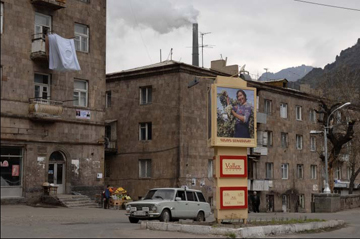 Advertisement for Valex Cooperation (owner of ACP) in Alaverdi cityk. Photo by Hrair “Hawk” Khatcherian |
As Srbuhi Harutyunyan suggests deforestation is not the only concern environmentalists have regarding ACP’s plan to mine. An even greater worry is the possibility of soil and water contamination. In copper mining toxic chemicals are employed to separate the ore and the remains of the chemicals (called tailings) are discarded. At Teghut the tailings will be dumped into a nearby gorge. Environmentalists believe there is a good possibility that the toxins will eventually seep into nearby rivers, including the Dbed river, which flows into the adjacent nations of Georgia and Azerbaijan. “The local water resources will be polluted to the extent of rendering them useless,” Anne Shirin says. The letter released by ACP states that “the way the tailing dump is designed/structured, it excludes possibility of any ground water contamination. […] There is no source water that is going to be affected by the proposed operations. Any impact on the water supply (both drinking and irrigation) of the nearby communities would be only positive.” Gagik Arzumanyan stated that these conclusions were confirmed by the Ministry of Health adding “of course, one can always argue about guarantees that the project would be implemented the way it is designed. In this respect we have accepted the proposal of environmental NGOs to form a monitoring group, comprised of representatives of not only such NGOs, but also the Government and nearby villages in order to periodically review project status.” Jeff Masarjian is doubtful despite the company’s assurances: “One only needs to observe other tailing dumps in Armenia to realize that environmental regulations regarding water quality and prevention of contamination are simply not enforced by the government. The dump in the village of Aghtala, which is not managed by ACP, but rather another company, is a prime example of how laws are not enforced. ACP took a group of observers, including 2 ATP staff to their copper mine in the southern town of Drembon, which they touted as a shining example of their environmental ethic. Our staff observed a tailing dump there that was completely accessible to wandering cattle and children.”
 Villagers from Teghut, courtesy of WWF Armenia |
ACP’s record on managing pollution hardly helps its case. ACP runs Armenia’s Alavaredi smelter. The smelter was built during the soviet era, but closed in 1989 due to the soviet collapse. It started up again in 1996. According to an article on EurasiaNet, in 2006-7 the smelter released twenty times the sulfuric anhydride permitted by the government, and in 2006 it emitted 12 tons of arsenic, nearly 105 tons of dust, 41 tons of zinc, nearly 3 tons of lead, and 3 tons of copper. The smelter currently operates without filters; ACP has stated that it is too expensive to purchase filters in relation to the smelter’s output. While no direct link has been established, the town of Alavaredi has seen increases of respiratory illnesses and birth defects: in two years respiratory illnesses have nearly tripled and birth defects have quadrupled, including anencephalia (where portions of the brain are missing or small), hydrocephalus (excessive water in the brain), and dicephalus (a fetus with two heads). Jeff Masarjian states that “it is hard to trust the word of a corporation that has a dismal environmental track record in the town of Alaverdi. […] The well documented damage to the health of the population of Alaverdi is dismissed by the company as having no direct connection to the toxins released from the smelter.” ACP states that comprehensive studies would be needed to prove the link between Alaverdi’s health issues and the smelting plant. “Such a conclusion to be true requires, to say the least, comparative analysis for all the regions in order to identify factors behind changes in individual regions, something that I assume not many people are willing to undertake, yet it does not hold them from making simplistic conclusions,” states the letter from the ACP, “[…] No region in Armenia has escaped major deterioration in health conditions due to reasons of malnutrition, sharp decline in both living standards and quality of health care (to name just a few).” While Gagik Arzumanyan calls the smelter plant “environmentally troublesome, to say the least” he also says that “it has nothing in common with Teghout project from environmental point of view.” ACP has been ordered to decrease the smelter’s emissions by 70% by 2009. The company has stated that if they are unable to reach that goal, they would shut down the plant, since they would not have the finances to pay the fine leveled by the government.
 Hills of Teghut Forest, courtesy of the Greens Union of Armenia |
The possible combination of deforestation and pollution has environmental organizations further concerned about wildlife and endangered species in Teghut. ACP’s own environmental assessment listed 21 species of fish, 86 birds, 55 mammals,10 reptiles, and 3 amphibians present in the area. Almost half of the mammal and fish are listed in the IUCN, including nine plant species. Gagik Arzumanyan says “we feel a moral obligation to save not only the few species included in the Red Book [IUCN], but as many of the others as possible. So we are planning on moving all plants included in the Red Book (by the way, no trees have been identified in the area to be included in the Red Book, and just two bushes) to nearby locations which won’t be subject to forest removal. We’d also be moving those trees that specialists would consider reasonably transportable. As to animals, we can see no major threat here since logging at Teghout would be taking place at a rate so slow that shall not affect the survival of animals, especially those few included in the Red Book.” Both Jeff Masarjian and Anne Shirin disagreed, stating that the mine would essentially devastate species’ habitats.
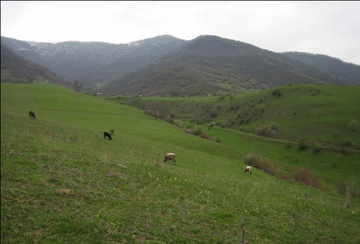 Gorge in Teghut Forest where tailings from mine will be dumped. Photo by Hrair “Hawk” Khatcherian |
Despite these environmental concerns, the towns near the planned mine have generally shown support for ACP. Both the villages of Teghut and Shnough contain high rates of emigration and unemployment, and the mine would bring needed jobs. However, these jobs will be short-term about 15-25 years, according to both Trees for Armenia and the Greens Union of Armenia. Anne Shirin stated that in return the villagers will “lose their agricultural lands, their homes and eventually have to move out of the area because of the pollution (as has happened in several parts of Armenia because of mining—depopulation and desertification).” She also believes that villagers’ acceptance of the project has been exaggerated and states that “there is a rumor that the village chiefs have been bribed by ACP.”
The government has argued that the mine is necessary for economic growth. Armenia has had difficulty revitalizing its economy ever since the Soviet collapse. A massive earthquake in 1988 devastated the country and the economy, and continuing difficulties with its neighbors Azerbaijan and Turkey have left the economy struggling. In 2004, 34.6% of the population lived below the poverty line. Industry is Armenia’s largest sector, bringing in 42% of Armenia’s GDP in 2006. Gagik Arzumanyan states that mining is the largest industry in Armenia and “Teghut is the largest mining […] project in the independent Armenia, which would make a major contribution to the economic development of Armenia (we’ve estimated it to be at least 1% of GDP growth annually at pretty conservative price assumptions), multiplying copper production in Armenia and increasing substantially molybdenum output. There are numerous other benefits of the project as well, including general boost to the economy of the region to supply this major operation, significant increase in fiscal revenue, etc.” It has been estimated that the mine will bring in one hundred million dollars annually for the years which it will be running. However, many doubt that the mine’s profits will stay in Armenia, since ACP is foreign owned. Jeff Masarjian says that “there is no way to assure that those benefits will come back to the Armenian people, who will have permanently given up their natural resources and environmental treasures. The profits will be privatized and the liabilities will be socialized for future generations.” He adds that other nations have viewed the mine as troublesome: “the European Bank for Reconstruction and Development reneged on its plans to give ACP a $250 million loan for this project, due to environmental issues. The Russian bank that finally agreed to provide the loan is well known for funding projects in Africa that disregard concerns for their environmental impact.”
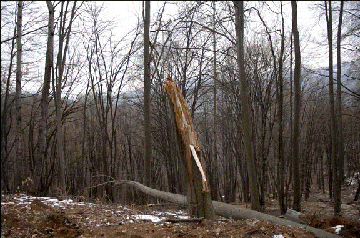 Development beginning in Teghut. Photo by Hrair “Hawk” Khatcherian |
Those who are against the Teghut mine believe that there are other options to gain revenue from an undamaged Teghut forest. Many environmentalists have brought up that the region could be used for ecotourism, this includes Masarjian, who adds that ecotourism would not only preserve the forest but also “distribute income more broadly throughout the local population.” Dr. Karen Manvelyan of World Wildlife Fund Armenia says that “it was suggestion of WWF instead of reforestation to establish a Protected Area near Teghut to conserve remaining high conservation value forests as the only solution to compensate destruction of nature by the mining. The same suggestion was done during Parliamentary hearings, but we are not sure that the company and other stakeholders will take it into account.” Currently 10% of Armenia’s total land is under varying levels of protection.
Two protest campaigns have taken place in the last year against ACP. In total over five thousand letters have been sent to the Armenian President, Prime Minister, Minister of Environmental Protection, Head of Parliament, Foreign Minister and its Embassy. Yet the project continued unabated, and no response to the protest letters has been issued from any of these governmental heads.
Like many nations Armenia is struggling over what is more important: short-term economic gain or long-term environmental preservation. While the mine will bring short-term jobs and an economic boost, it will also affect the Teghut region for centuries to come. No one knows how long it takes for an open-pit mine to lose its dead-zone status, because no open-pit mine has yet done so. With this issue comes the fact that no none can truly know what the mine’s affect will be, only estimations and projections are possible. Environmentalists and activists are fighting an uphill battle since the government has already given the mine the go-ahead and appears unlikely to change its position.
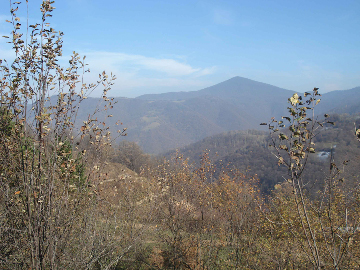 Teghut Forest, courtesy of WWF Armenia |
Gagik Arzumanyan, who is not just executive director of ACP but also an avid photographer, including nature photography, addresses the overall issue this way: “As with any project, if the benefits exceed costs associated with that project, then the project shall proceed. So the point is to make sure that both benefits and costs (including potential externalities which may not be subject to precise assessment) of a project are properly identified and assessed. This is, I believe, a viewpoint shared more or less by everybody, since even those opposing Teghout mining project do accept that mining in general is not something that shall be opposed, but there are just conditions to be met for a mining project to be considered acceptable. […] We’ve attempted to apply the strictest available regulations (even if they are not applicable to this very project) in order to assess environmental (and all other costs) of the project, while we have been pretty conservative in estimates of the economic and social benefits. The result is that the benefits surpass the costs by a factor of about 700.” Masarjian sees it very differently: “It is easy to calculate the amount and value of potential ore and profit from the project, but much more difficult to put a financial value on the flora, fauna, and landscape that will be permanently destroyed and removed from the use by future generations of Armenians.”
Both men however agree that perhaps the best way forward would be an independent investigation of the Teghut mine. Arzumanyan ends his company’s letter to protesters by saying: “Biased information, as I am sure you perfectly know, can never be good basis for action. Since the information we provide may also be considered biased, it shall be the job of those considering action for the good of Armenia (be that NGOs, Government, or any other entity or person) to identify the truth based on the views of all interested parties, with maximum possible information. Without caring for the benefit of a second opinion, we are heading towards guaranteed loss.” Masarjian agreed with this statement and added what he would like to see happen next: “I feel that an outside, neutral firm that has expertise in evaluating mining projects and their environmental impacts should be hired by the government of Armenia, which is charged with protecting the health of the land and people, so that truly accurate information regarding benefits and risks can be developed.”
Work on the mine has already begun with clear-cutting of some areas of Teghut Forest and building and paving roads. If a neutral investigation were to be held, it would have to happen soon.